IN THE GALLERY: Broken
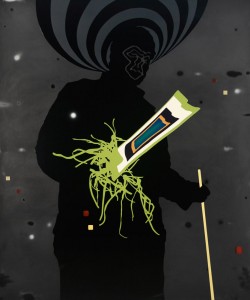
Purblind (Guru), 2009
Partially abraded high gloss enamel and oil paint on aluminium
180 cm x 150 cm
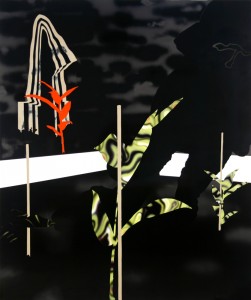
Half Eye Half Mouth Half Brain, 2009
Partially abraded high gloss enamel and oil paint on aluminium
180 cm x 150 cm
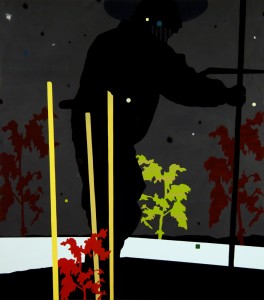
Guru (Red Plant), 2009
Partially abraded high gloss enamel and oil paint on aluminium
170 cm x 150 cm
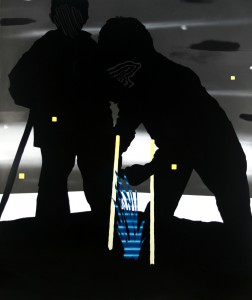
Broken (Blue Plant), 2009
Partially abraded high gloss enamel and oil paint on aluminium
180 cm x 150 cm
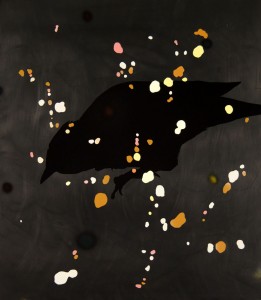
Afterlife 092, 2009
Partially abraded high gloss acrylic, enamel and oil paint on aluminium
69 cm x 60 cm
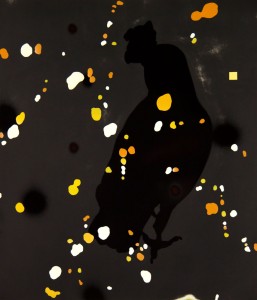
Afterlife 091, 2009
Partially abraded enamel and oil paint on aluminium
60 x 51 cm
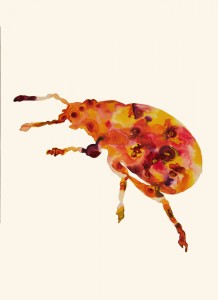
Insect 0158, 2009
Acrylic on paper
77 x 57cm + frame
Neil Haddon
29 Aug - 19 Sep 2009
“The more that you try to erase me the more that I appear” sings Thom Yorke. That’s not a bad way to start on Neil Haddon’s paintings. He erases things. Usually it’s a big black glossy panel, a pristine and austere black mirror that he sets to with a Makita sander. Occasionally you can see evidence of where the sander has powered its way through two or three layers of paint and primer to the aluminium substrate. But this once perfect enamel paint surface is left only partially abraded. The difference in lustre, between glistering enamel and its antithesis – matt flatness is striking or, conversely it is subtle, depending on where you stand in relation to the panel. The effect produced by the absence of sheen next to full gloss is such that we might be tempted to talk about the presence of two different colours. But this would not be right. It is still Dulux Jet Black, though some areas have lost their shimmer, their gleam. It is this absence of deep black that reveals the foundations of an image.
Onto this ground remnants of the original source image make their way. Often these fragmented pictures are taken from local newspapers that Haddon has read and might otherwise have discarded. Occasionally they come from screen shots taken off the local TV news. Sometimes they are snapshots that he has taken of his immediate urban surrounds. Seemingly inconsequential details are reinstated on the paintings but they are left incomplete. They have been recoloured or repeated, resized and transformed, and in so doing, their connection to their newsprint narratives has been broken.
Included in this exhibition are works on paper from Haddon’s Counter Image series. These paintings, nominally of insects, lack any kind of taxonomy or nomenclature. The macroscopic, precise detail of amateur entomological photography has been replaced with an equally precise jewel-like painted indulgence of stains and spills.
Neil Haddon’s work is held in private and public collections internationally and in Australia, including: The National Gallery of Victoria, The Tasmanian Museum and Art Gallery, Artbank, The Gold Coast Arts Centre, Devonport Regional Gallery and the University of Tasmania. His painting Purblind (Opiate) was the winning entry in the Glover Prize 2008.
